Iconic plants of Chelsea
Discover some of the key plants associated with the RHS Chelsea Flower Show
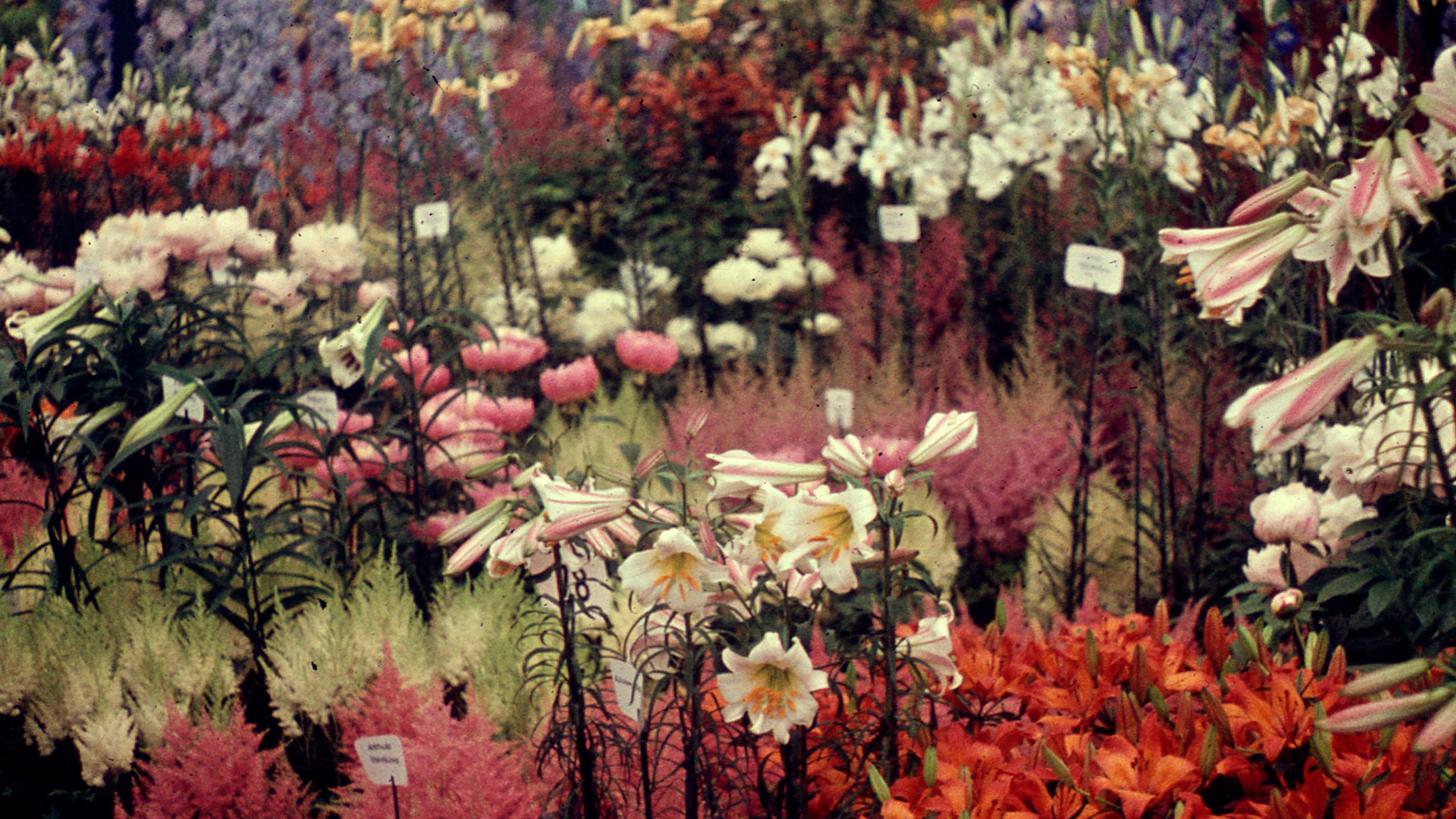
The RHS Chelsea Flower Show has always been a great place to see the newest and most interesting plants. Over the years, the show has been the launchpad for new plant discoveries and hybrids, and for the return to fashion of some long forgotten varieties. Some of the plants associated with Chelsea are still firm favourites in our gardens. Others have fallen out of favour and only live on in our library and herbarium collections.
Chelsea is the richest spotting ground in the whole world for new, forgotten or neglected plants.
Read on to uncover the stories behind some of Chelsea’s most iconic plants.
Saxifraga ‘Tumbling Waters’ (1920)
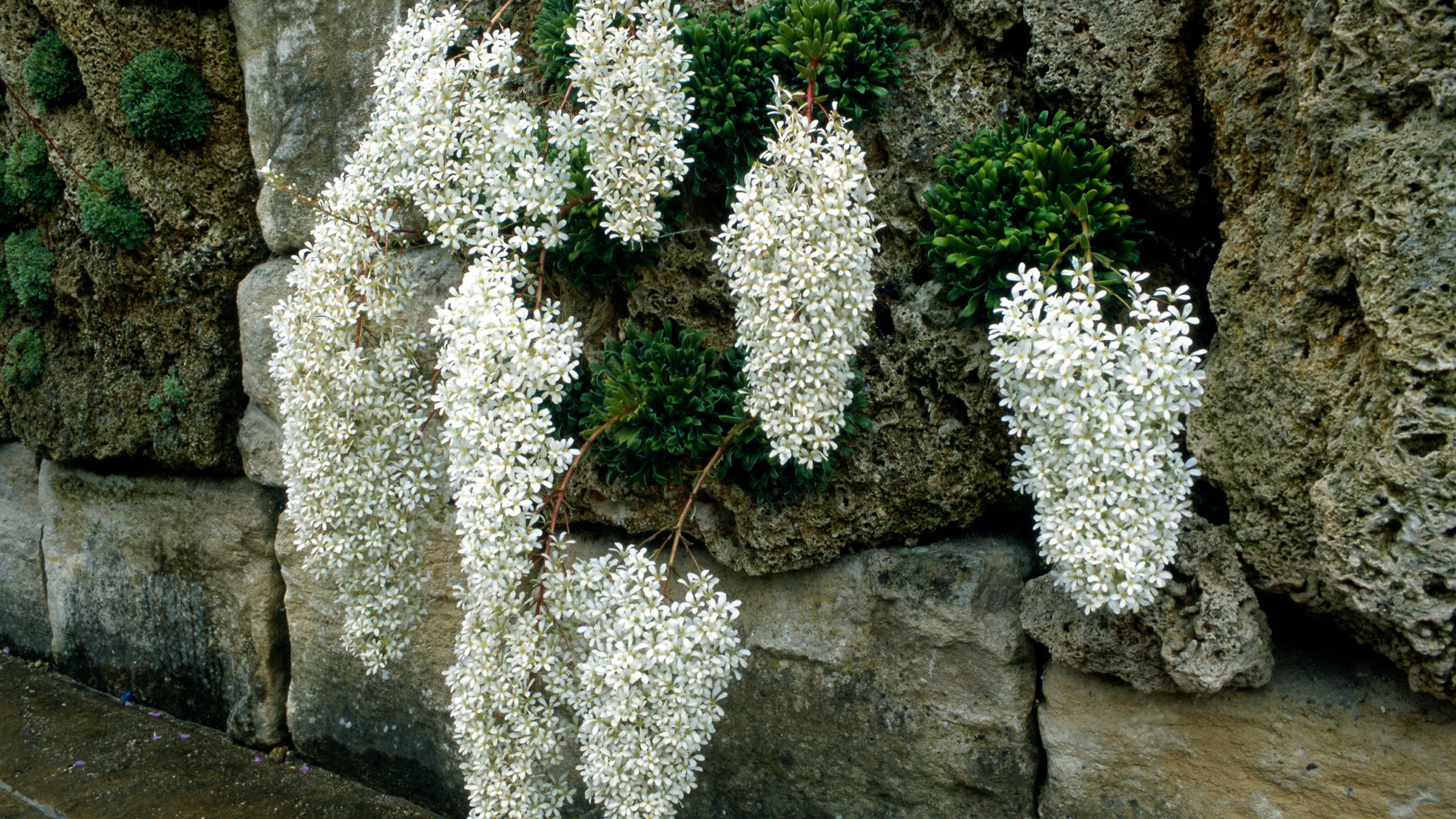
‘Tumbling Waters’ was bred in 1913 by Captain Bertram Symons-Jeune, who won many gold medals for his Chelsea rock gardens. ‘Tumbling Waters’ also won an Award of Garden Merit, and was described as the “finest of the hybrids of its group with fine rosettes and magnificent panicles of white flowers freely produced”.
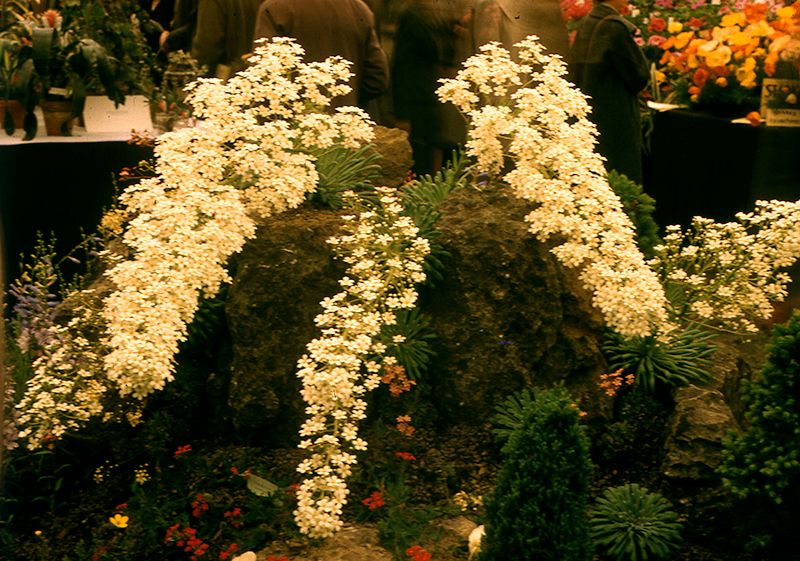
Saxifraga ‘Tumbling Waters’ on show at Chelsea, 1957. Credit: Will & Elsie Tjaden / RHS Lindley Collections.
Saxifraga ‘Tumbling Waters’ on show at Chelsea, 1957. Credit: Will & Elsie Tjaden / RHS Lindley Collections.
But it was for Phlox that Symons-Jeune was best-known. He bred many new cultivars at his home, Runnymede House in Old Windsor, and wrote a seminal work on the taxon, published in 1954, five years before his death.
Pieris formosa var. forrestii – 1924
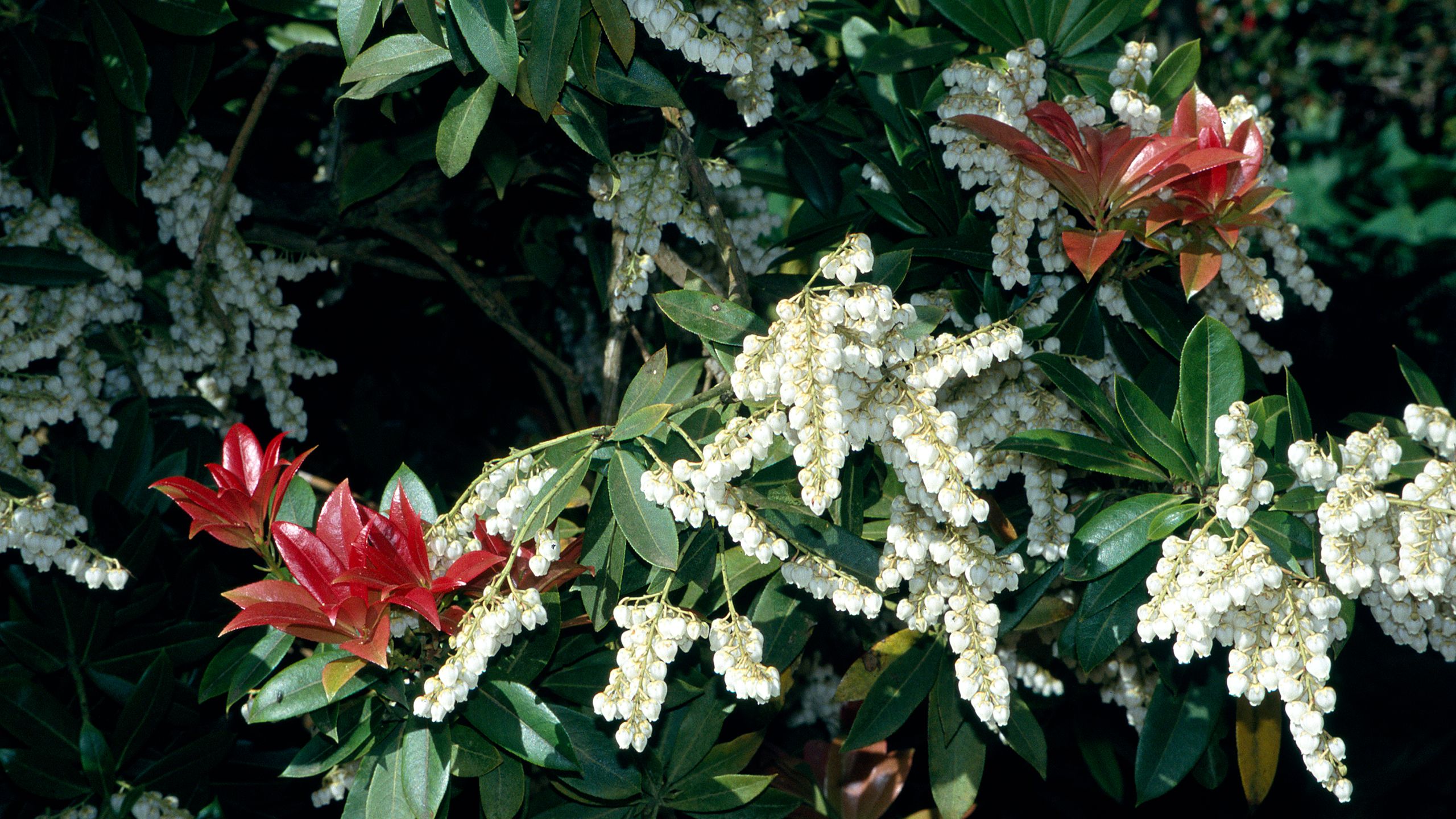
The Scottish plant collector George Forrest (1873-1932) brought back seeds of Pieris formosa var. forrestii to Britain after his first trip to the Yunnan province of China in 1904. Forrest’s expedition was supported by the Liverpool cotton broker Arthur Bulley (1861-1942), who founded the Ness Botanic Garden in Liverpool and set up the nursery Bees Limited.
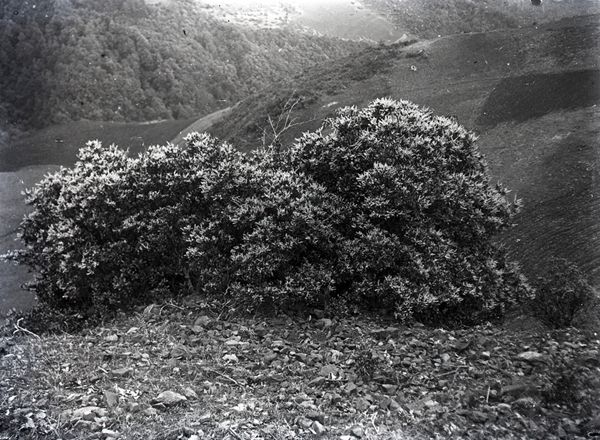
Photograph of Pieris formosa var. forrestii taken by Forrest in China. Reproduced with the kind permission of the Archives of the Royal Botanic Garden Edinburgh.
Photograph of Pieris formosa var. forrestii taken by Forrest in China. Reproduced with the kind permission of the Archives of the Royal Botanic Garden Edinburgh.
Pieris formosa var. forrestii gained the Award of Merit at Chelsea in 1924. There are many cultivars, but the most frequently encountered are ‘Jermyns’, with leaves that are deep red to start, turning a dark glossy green, and with long drooping red panicles during the winter (Award of Merit, 1984). Probably the best known cultivar is ‘Wakehurst’, with its vivid red young foliage. ‘Wakehurst’ received a First Class Certificate at Chelsea in 1930, and an Award of Garden Merit in 1984.
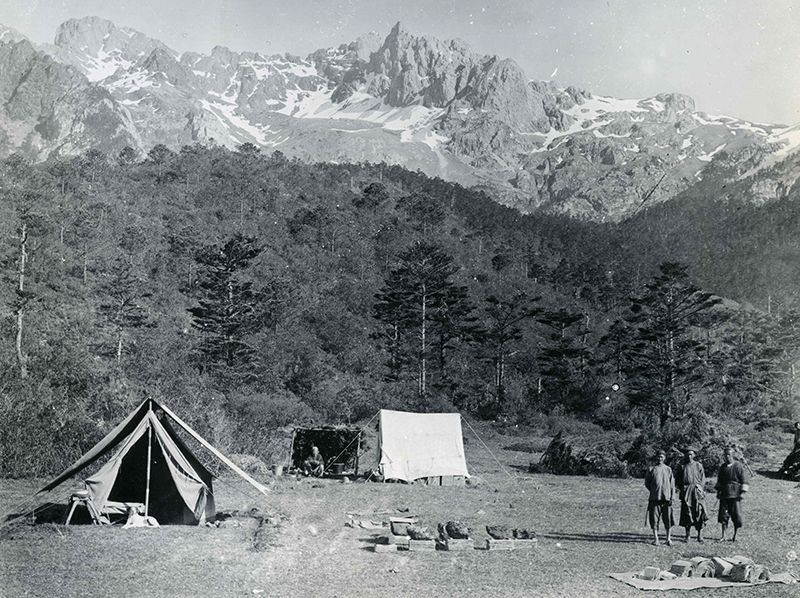
George Forrest’s camp at 3,350m in the Lichiang Range (Yulong Shan) on his first expedition. Plant Presses are being weighed down by heavy stones in the middle foreground. Credit: RHS & The Royal Botanic Garden Edinburgh.
George Forrest’s camp at 3,350m in the Lichiang Range (Yulong Shan) on his first expedition. Plant Presses are being weighed down by heavy stones in the middle foreground. Credit: RHS & The Royal Botanic Garden Edinburgh.
Forrest syndicated later trips to China, and the RHS was just one of the sponsors of his 1917-1919 expedition, along with the Loders of Wakehurst, J. C. Williams of Caerhays, and Stephenson Clarke of Borde Hill to name a few. Forrest made seven trips in all to the region, bringing back some 31,000 plant specimens.
Lupinus Russell Group (1938)
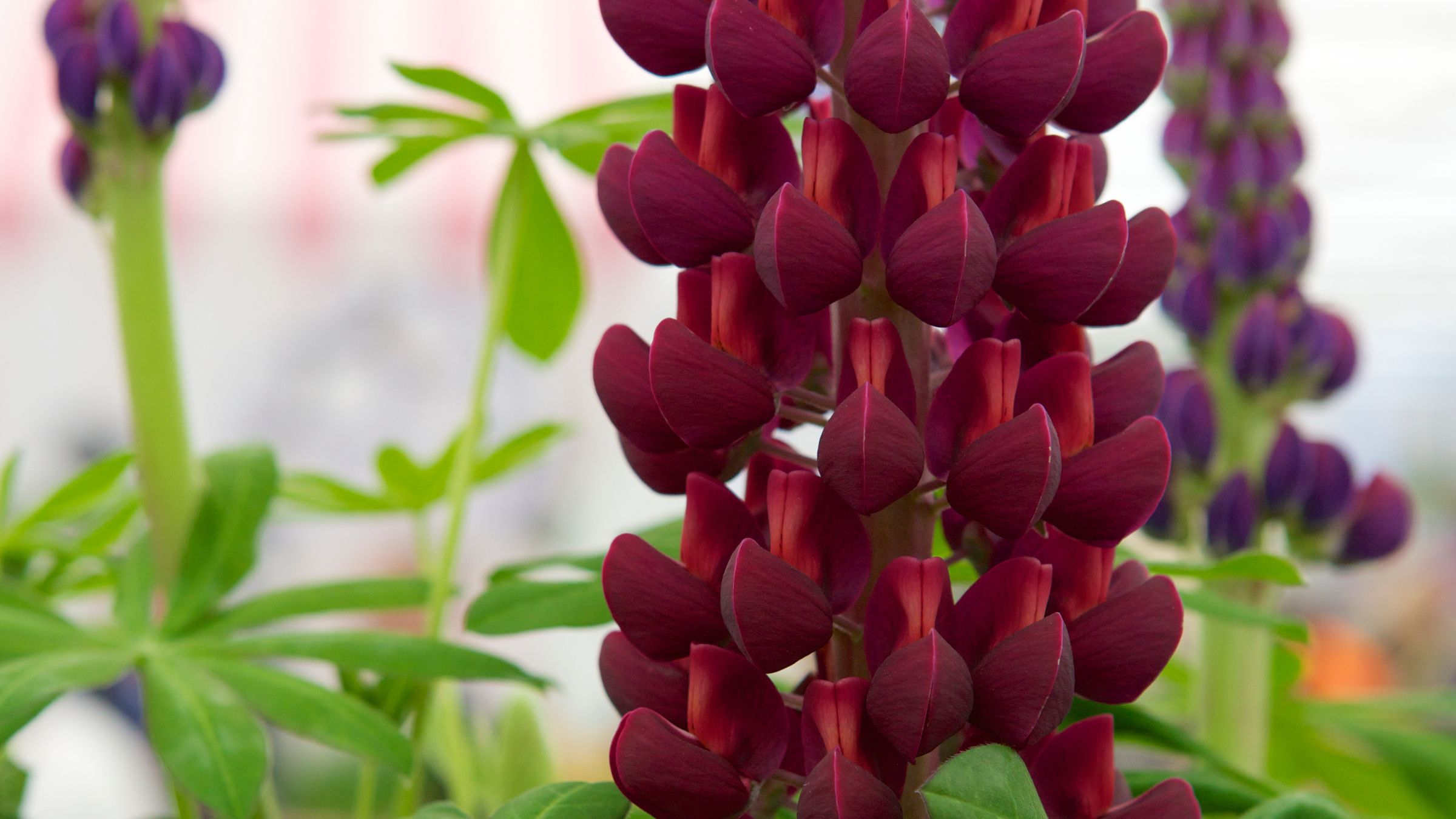
The celebrated plant collector David Douglas encountered Lupinus polyphyllus in Canada in 1825. He wrote in his journal: “I cannot pass over the grandeur of Lupinus polyphyllus covering immense tracts of low land on the banks of streams”. Eighty-five years after Douglas bought specimens back from America, the horticulturist George Russell began to hybridise this taxon.
In 1911 Russell began crossing and recrossing lupins in his allotments in York, but it took 20 years before he was satisfied that the results were ready for exhibition. He developed much larger and more colourful flower spikes than the natural lupin species. Russell’s lupins were first exhibited at Chelsea in 1938, where it won a Silver-Gilt Flora Medal. Unfortunately many Russell varieties were lost to virus or allowed to self sow and revert to their original paler colours.
Rhododendron yakushimanum (1947)
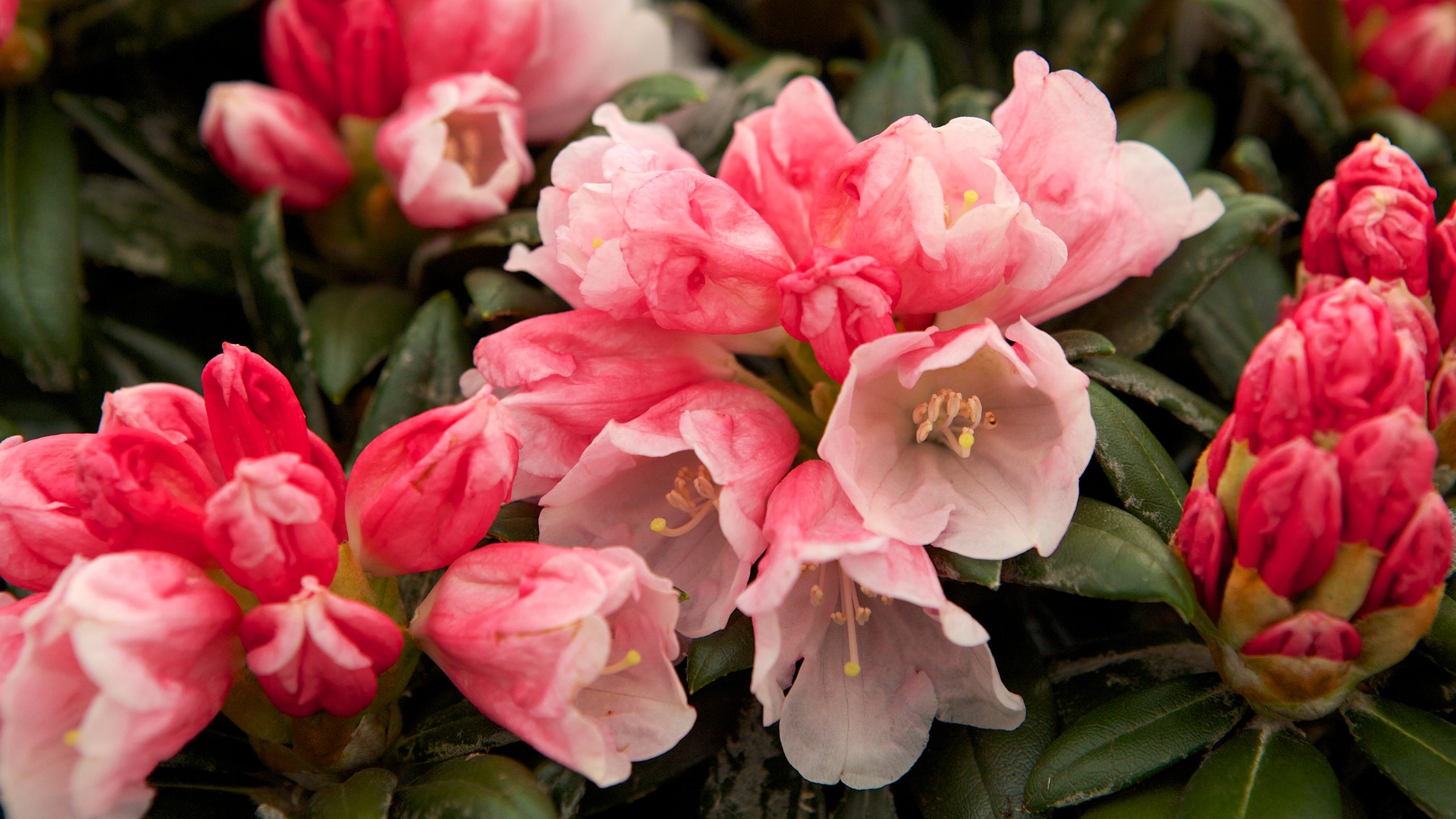
This plant is from the slopes of Yakushima, a small and mountainous island south of Kyushu. It was introduced into the UK in 1934 when Lionel de Rothschild obtained specimens from the nursery of Koichiro Wada’s nursery, one of Japan’s most famous modern plant breeders. The plant was transferred to Wisley in 1946, and displayed at subsequent Chelsea shows, winning a First Class Certificate in 1947 and an Award of Garden Merit in 2003.
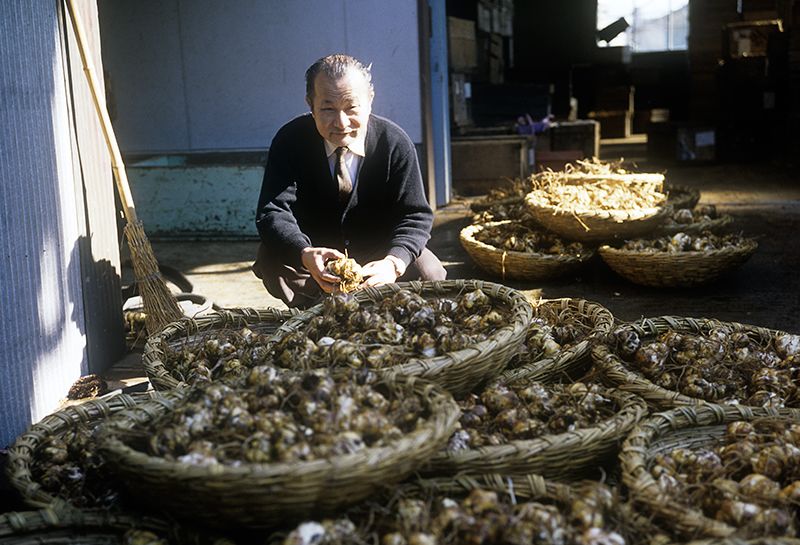
Japanese rhododendron pioneer Koichiro Wada. Credit: Valerie Finnis / RHS Lindley Collections
Japanese rhododendron pioneer Koichiro Wada. Credit: Valerie Finnis / RHS Lindley Collections
Rosa PEACE (1948)
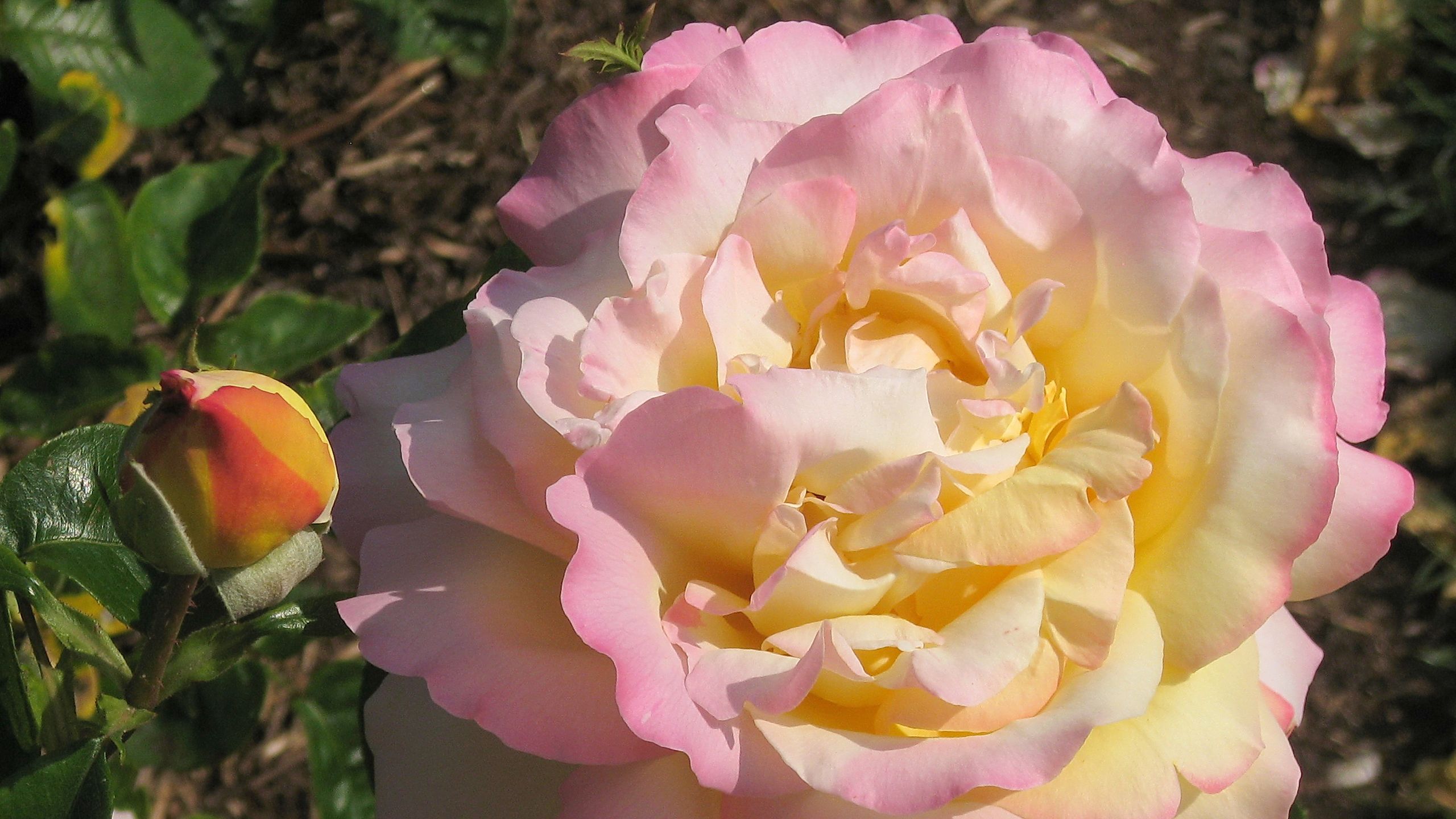
Rosa PEACE was developed by the great French horticulturist Francis Meilland between 1935 and 1939. With the imminent threat of invasion by Nazi Germany Meilland sent cuttings of the plant to friends in Italy, Turkey, Germany, and the United States. The specimen bound for the United States was sent on the last available plane before the German invasion. Upon its arrival it was safely propagated by the Conrad Pyle Company, and given the brand name Peace. The garden historian Charles Quest-Ritson has described Rosa PEACE as “simply the most famous rose in the world, and probably still the most widely grown”.
Cornus ‘Eddie’s White Wonder’ (1972, 1977)
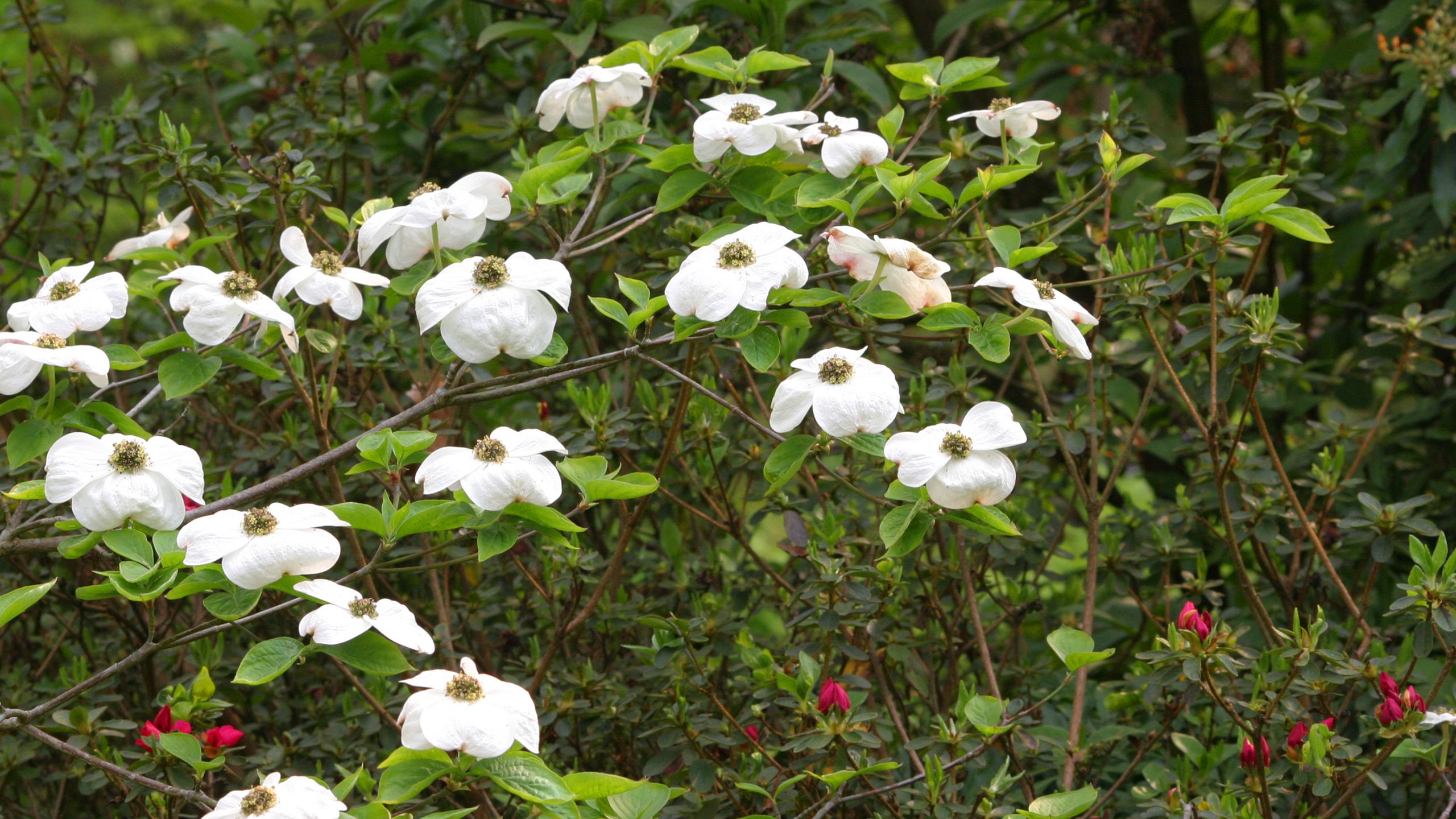
Cornus ‘Eddie’s White Wonder’ was bred in Vancouver in the 1940s by nurseryman Henry Eddie, who was widely known as the ‘Rose King of Canada’, having originally specialised in the production of roses. Eddie crossed the eastern dogwood (Cornus florida) with the Vancouvian native western dogwood (Cornus nuttallii), creating a plant resistant to eastern American fungal disease (anthracnose) that has been known to plague dogwoods in Vancouver.
‘Eddie’s White Wonder’ has large white overlapping bracts in spring, dark green summer foliage that turn to rich red and plum shades in autumn, and small red fruits in the winter. It was exhibited at Chelsea by the Crown Commissions in 1972 and 1977, where it won an Award of Merit and First Class Certificate respectively.
Erysimum
‘Bowles Mauve’ (1982)
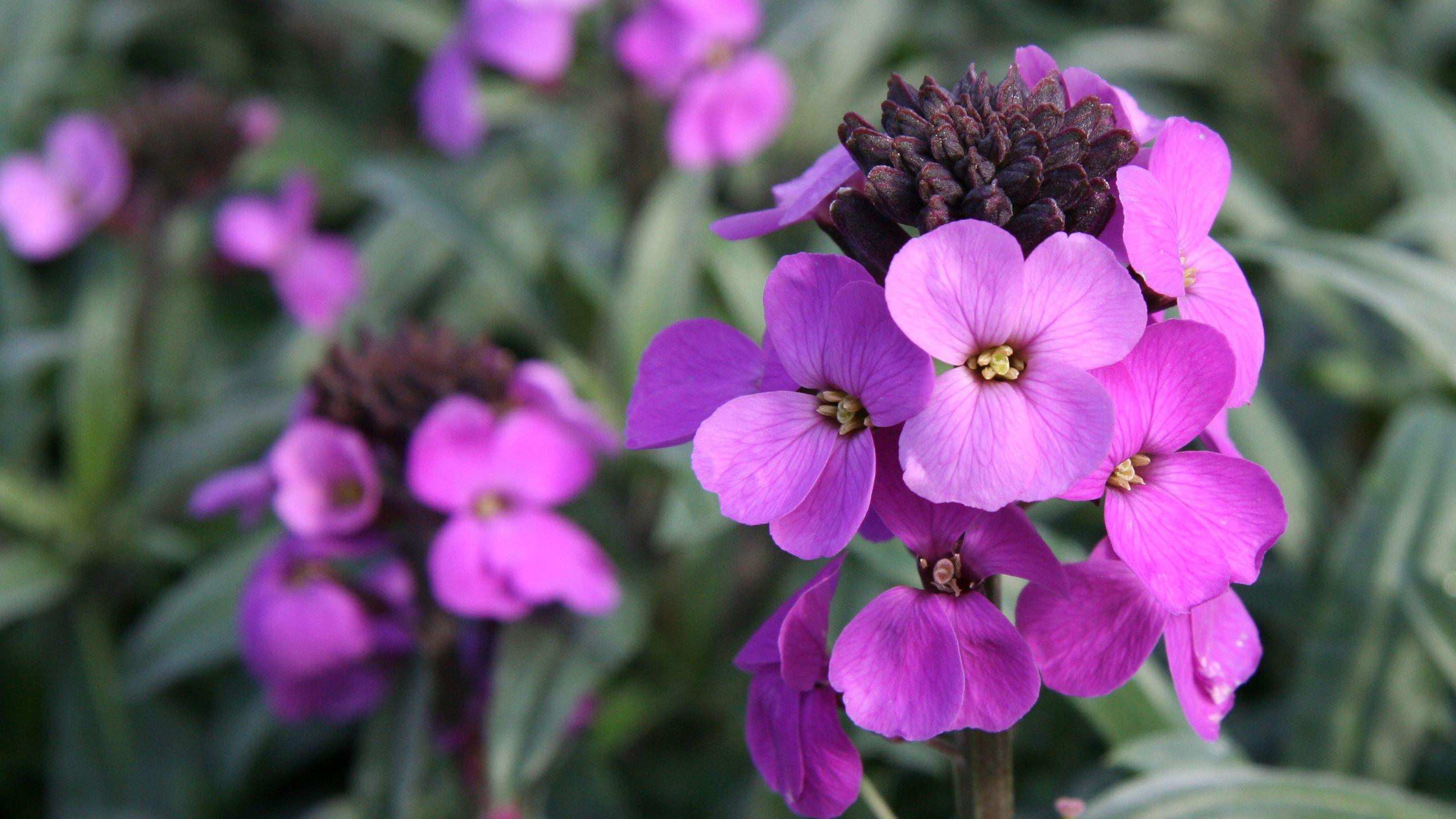
‘Bowles’s Mauve’ was discovered by Frances Perry VMH, the first woman council member of the RHS, and the Society’s first woman vice-president. Spending most of her life in and around Enfield, Frances was a close friend of her neighbour, the horticulturist Edward Bowles (1865-1954). Perry knew right away that the purple wallflower was a new cultivar when men working at Bowles’s Myddleton House garden didn’t recognise it.
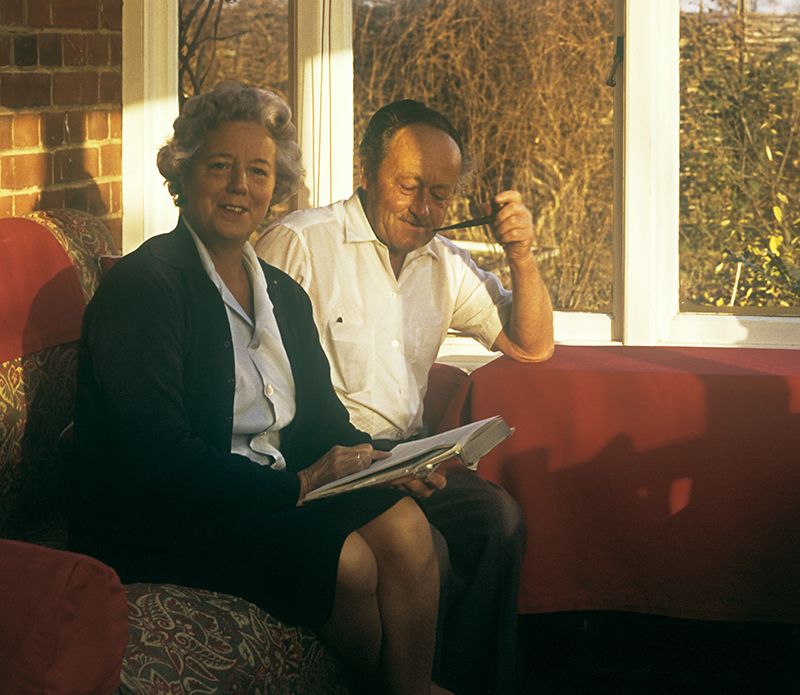
Frances Perry, pictured with her first husband Gerald Perry. Credit: Valerie Finnis / RHS Lindley Collections
Frances Perry, pictured with her first husband Gerald Perry. Credit: Valerie Finnis / RHS Lindley Collections
Heuchera villosa ‘Palace Purple’ (1983)
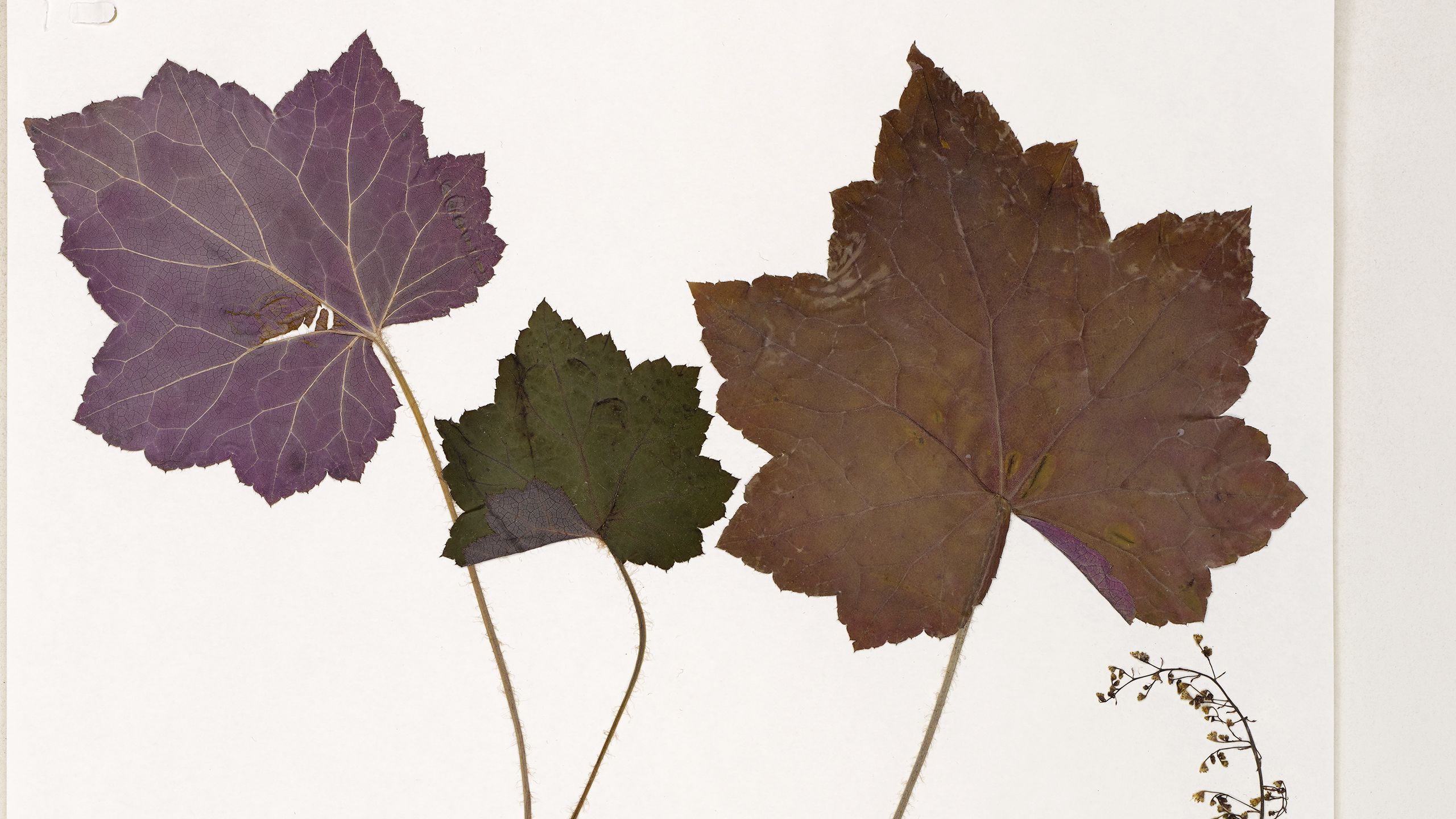
‘Palace Purple’ changed the face of gardening, as one of the first herbaceous plants to be used for its interestingly rich burgundy-coloured foliage. It was raised from wild-seed collected seed by Brian Halliwell whilst he was curator of the herbaceous and alpine collections at Kew. The seed had been sent to him by the Philadelphian born Edgar Wherry, botanist, pteridologist and plant ecologist.
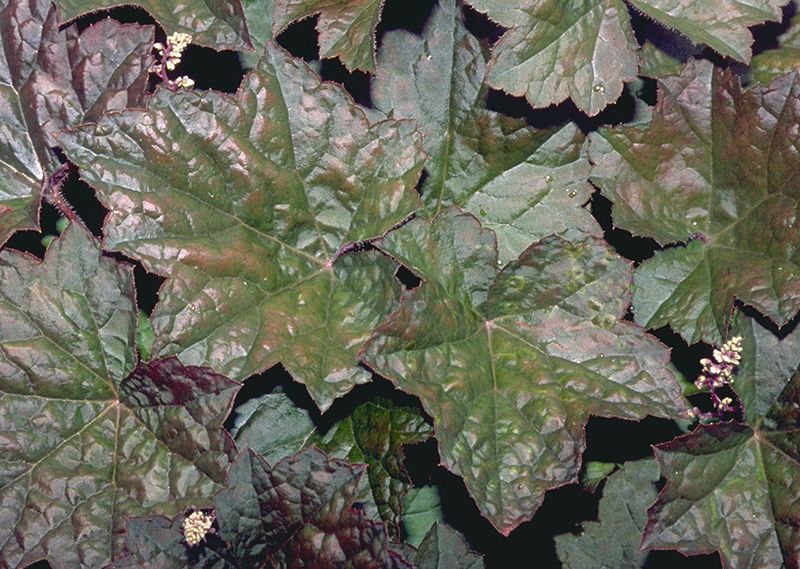
Heuchera villosa ‘Palace Purple’. Credit: RHS Herbarium.
Heuchera villosa ‘Palace Purple’. Credit: RHS Herbarium.
The plant’s leaves were the exact colour of the dark burgundy brickwork on the exterior of Kew Palace in the 1980s, prior to its current restoration colour of terracotta.
Geranium ROZANNE (‘Gerwat’ PBR) (2000)
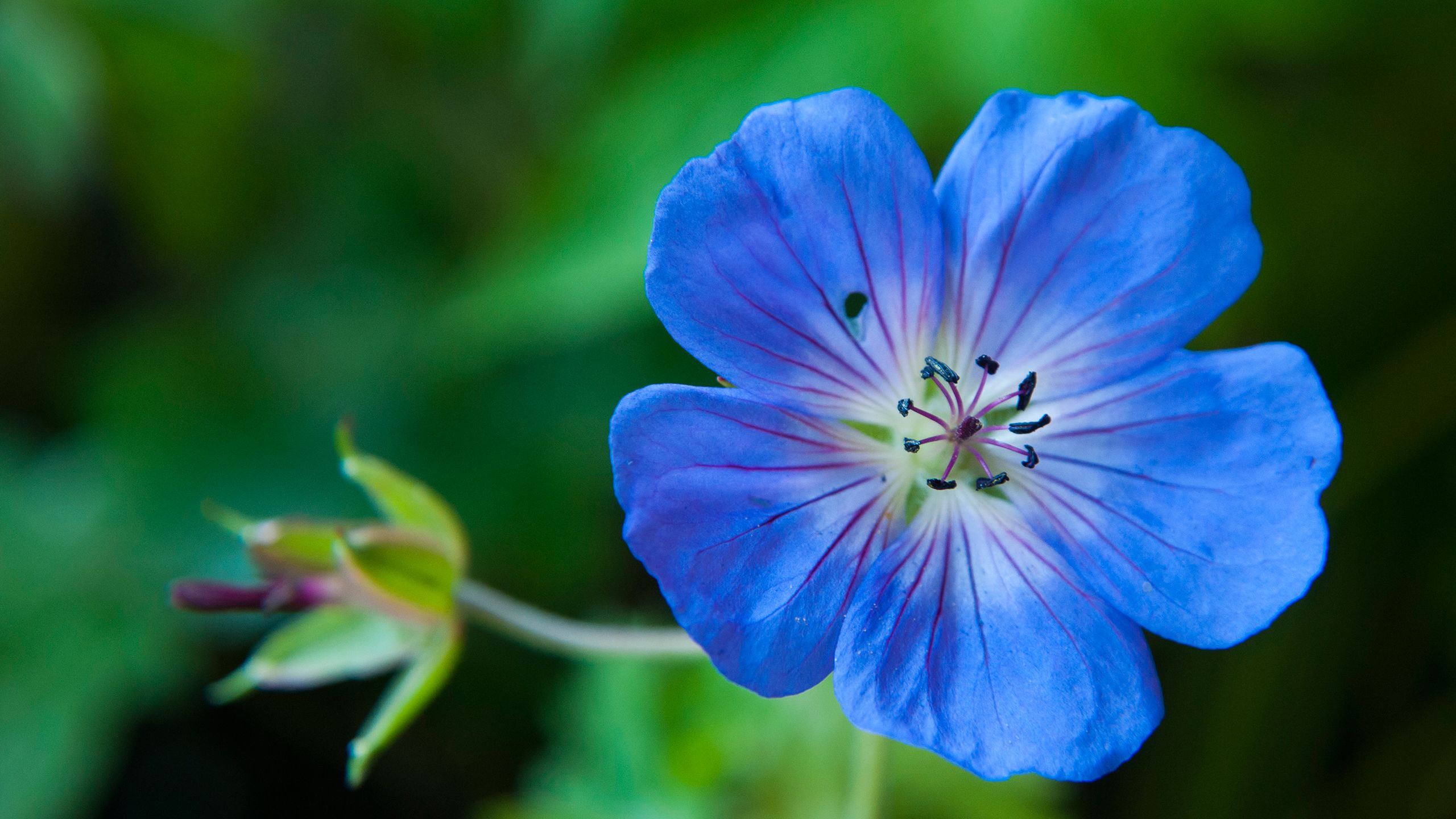
Geranium ROZANNE was judged Plant of the Centenary at the RHS Chelsea Flower Show in 2013. In took Chelsea by storm when it was launched in 2000. Three years after the Chelsea launch, Thompson & Morgan supplied the seeds of another geranium, ‘Jolly Bee’, which had been bred in Holland, and was protected by Plant Variety Rights.
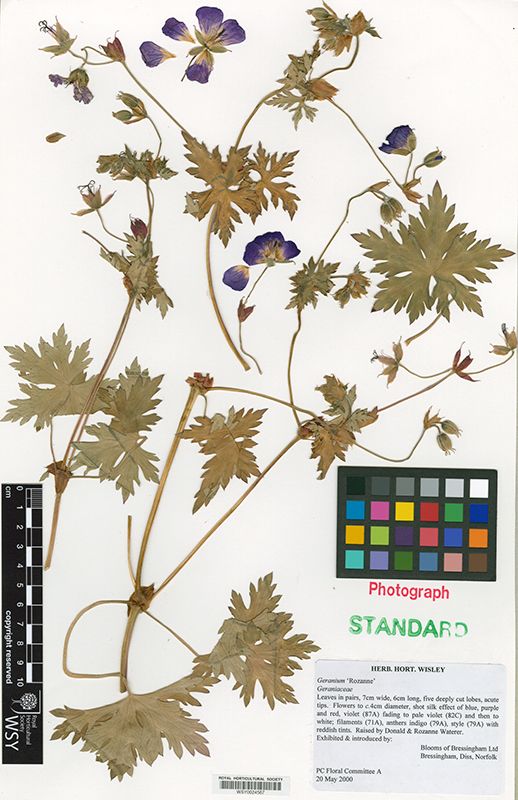
Geranium ROZANNE (‘Gerwat’PBR). Raised by Donald & Rozanne Waterer, exhibited and introduced by Blooms of Bressingham Ltd. Sample made from plant judged by PC Floral Committee A, RHS Chelsea, 20th May 2000. Record WSY0024567, imaged by the herbarium digitisation team © RHS
Geranium ROZANNE (‘Gerwat’PBR). Raised by Donald & Rozanne Waterer, exhibited and introduced by Blooms of Bressingham Ltd. Sample made from plant judged by PC Floral Committee A, RHS Chelsea, 20th May 2000. Record WSY0024567, imaged by the herbarium digitisation team © RHS
However, in 2006 a RHS trial that included both cultivars concluded that they were one and the same. A seven-year court battle between the owners of the two cultivars ensued, which ultimately went against the Dutch grower, who estimated that the battle had cost him in excess of 200,000 Euros.
Delphinium ‘The Black Arrow’ (2004)
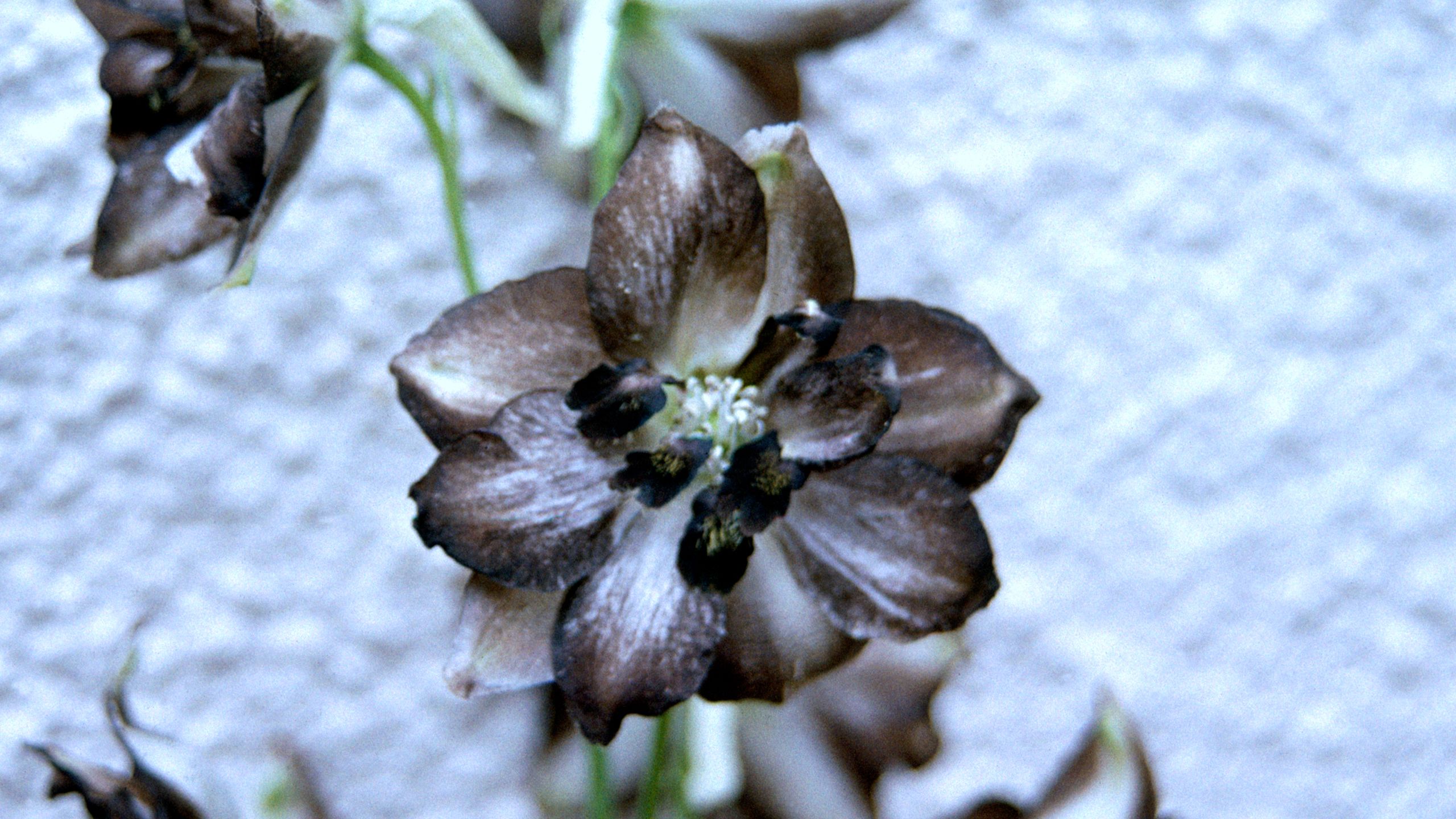
The story of Delphinium ‘The Black Arrow’ tells us how trends change, and how the fortunes of a plant can rise and fall. When it was launched at Chelsea in 2004, Delphinium ‘The Black Arrow’ caused a sensation. Demand for the new plant was so high that gardeners queued up outside its grower, Rougham Hall Nurseries, to register their interest in the new plant.
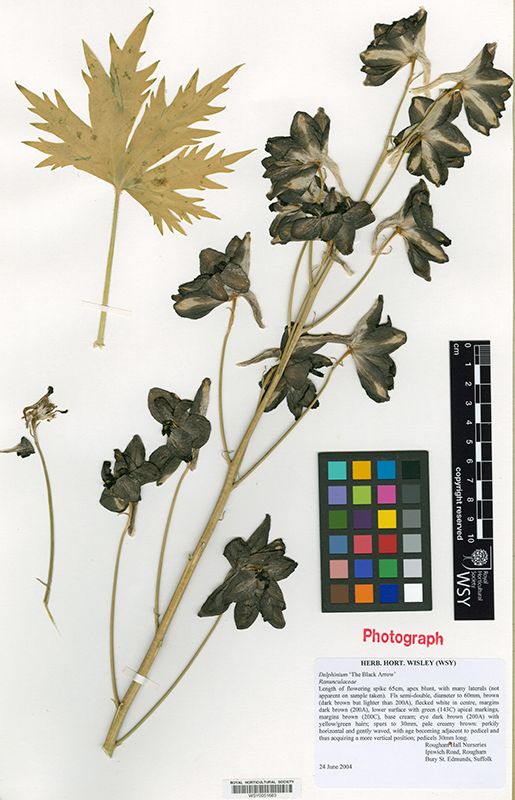
Delphinium ‘The Black Arrow’. Exhibited and grown at Rougham Hall Nurseries, Suffolk. Record WSY0051663, imaged by the herbarium digitisation team © RHS
Delphinium ‘The Black Arrow’. Exhibited and grown at Rougham Hall Nurseries, Suffolk. Record WSY0051663, imaged by the herbarium digitisation team © RHS
But sixteen years later, it is now considered as extinct from the gardening trade. Its initial popularity could be attributed to the striking colour of its petals – a very dark brown according to the RHS colour chart.

Created by RHS Lindley Library.
Based at the Royal Horticultural Society’s headquarters at Vincent Square in London, the Lindley Library holds a world-class collection of horticultural books, journals and botanical art.
Supported by the National Lottery Heritage Fund.
